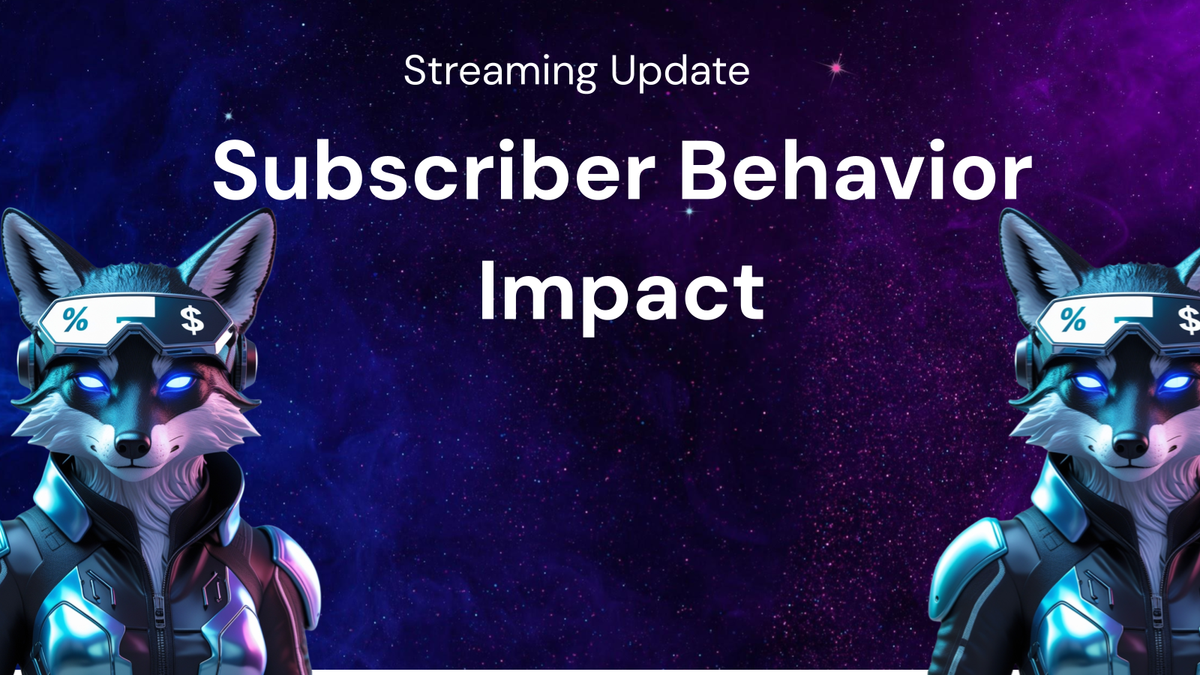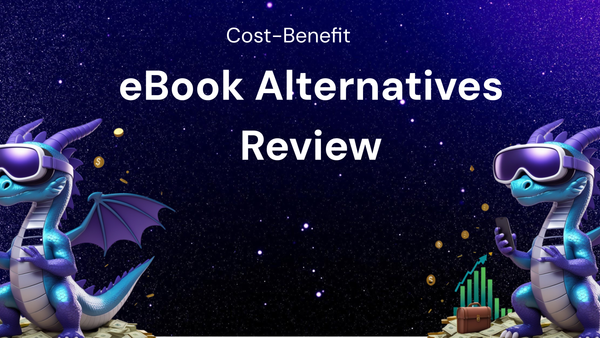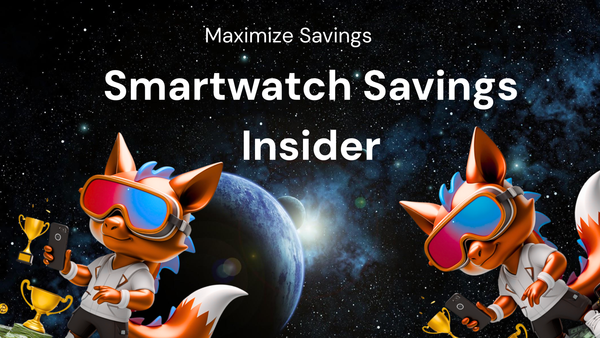How Streaming Service Updates Impact Subscriber Behavior

How Streaming Service Updates Impact Subscriber Behavior
The streaming landscape is a dynamic ecosystem, constantly evolving with new content, features, and pricing models. To stay competitive and retain subscribers, streaming services regularly roll out updates – tweaks to the user interface, additions to the content library, and changes to pricing plans. These updates, however, are not neutral events. They have a profound impact on subscriber behavior, shaping viewing habits, influencing satisfaction levels, and ultimately, determining whether a subscriber stays or cancels their subscription.
This blog post delves into the various ways streaming service updates influence subscriber behavior, exploring both the positive and negative ramifications of these changes. We'll examine how content additions, feature enhancements, pricing modifications, and even seemingly minor UI tweaks can trigger a cascade of reactions from subscribers, impacting everything from their viewing patterns to their overall perception of the service.
I. Content Updates: The Lifeblood of Subscriber Engagement
Content is king, and in the realm of streaming, it's the primary driver of subscriber acquisition and retention. Streaming services understand this implicitly and invest heavily in acquiring or creating fresh content to keep their audiences engaged. Content updates, whether they involve adding blockbuster movies, critically acclaimed TV shows, or niche documentaries, have a direct and immediate impact on subscriber behavior.
- Increased Viewing Time: The most obvious impact of a compelling content update is an increase in viewing time. When a highly anticipated season of a popular show drops, or a beloved classic film becomes available, subscribers are likely to binge-watch episodes or revisit familiar favorites. This increased engagement strengthens their attachment to the service and reinforces their subscription.
- Genre Exploration: Content updates can also encourage subscribers to explore genres they might not have previously considered. A streaming service might introduce a curated collection of foreign films, a dedicated section for independent documentaries, or a slate of original anime series. This exposure to new genres can broaden subscribers' tastes and make them more likely to discover hidden gems within the platform.
- Social Sharing and Recommendations: Exciting content updates often trigger a wave of social sharing and recommendations. Subscribers enthusiastically share their favorite shows and movies with friends and family, acting as brand ambassadors for the streaming service. This word-of-mouth marketing can attract new subscribers and further solidify the platform's reputation.
- The "FOMO" Effect: The fear of missing out (FOMO) is a powerful motivator in the streaming world. When a streaming service acquires exclusive rights to a highly sought-after movie or TV show, it can create a sense of urgency among potential subscribers who don't want to be left out of the cultural conversation. This FOMO effect can drive new subscriptions and encourage existing subscribers to remain loyal.
- Content Removal: The Dark Side of Updates: While adding content is generally perceived positively, removing content can have the opposite effect. Subscribers are often frustrated when their favorite shows or movies disappear from a streaming service, especially if they haven't had the chance to watch them yet. This can lead to decreased satisfaction and even subscription cancellations. Transparency and advance notice about content removal are crucial for mitigating negative reactions.
- The Importance of Original Content: Original content has become a key differentiator for streaming services. Exclusive shows and movies that can't be found anywhere else are a major draw for subscribers. Investing in high-quality original programming can create a loyal fanbase and establish a strong brand identity. However, the quality of original content must be consistently high to maintain subscriber satisfaction.
II. Feature Enhancements: Improving the User Experience
Beyond content, the features offered by a streaming service play a crucial role in shaping subscriber behavior. Feature enhancements, such as improved search functionality, personalized recommendations, offline downloads, and enhanced parental controls, can significantly improve the user experience and increase subscriber satisfaction.
- Improved Navigation and Search: A user-friendly interface and efficient search functionality are essential for helping subscribers find the content they're looking for. Updates that streamline navigation, improve search algorithms, and offer advanced filtering options can make it easier for subscribers to discover new shows and movies, leading to increased viewing time and satisfaction.
- Personalized Recommendations: Recommendation algorithms are a powerful tool for guiding subscribers towards content they're likely to enjoy. Updates that improve the accuracy and relevance of recommendations can significantly enhance the user experience and encourage subscribers to explore a wider range of titles. Personalized recommendations can also help subscribers discover hidden gems they might have otherwise missed.
- Offline Downloads: The ability to download content for offline viewing is a valuable feature for subscribers who want to watch movies and TV shows on the go, without relying on a stable internet connection. This feature is particularly appealing to travelers, commuters, and anyone who wants to save on data usage. Updates that improve the download process or expand the availability of offline downloads can enhance subscriber satisfaction.
- Enhanced Parental Controls: Parental controls are essential for families with young children who want to ensure that their kids are only watching age-appropriate content. Updates that provide more granular control over content restrictions, viewing time limits, and profile management can give parents peace of mind and make the streaming service more appealing to families.
- Multi-Device Support: Streaming services are increasingly accessible on a wide range of devices, including smartphones, tablets, smart TVs, and gaming consoles. Updates that improve compatibility with different devices and offer seamless streaming across platforms can enhance the user experience and make the service more convenient to use.
- Interactive Features: Some streaming services are experimenting with interactive features, such as live chats, watch parties, and interactive narratives, to enhance the viewing experience. These features can create a more engaging and social experience for subscribers, making them feel more connected to the content and to each other.
- Accessibility Features: Updates that improve accessibility for users with disabilities, such as closed captions, audio descriptions, and screen reader compatibility, are essential for making streaming services more inclusive and accessible to a wider audience.
III. Pricing and Subscription Model Changes: A Risky Proposition
Pricing is a sensitive issue for subscribers, and any changes to pricing plans or subscription models can have a significant impact on their behavior. While price increases are generally unpopular, they may be necessary to offset rising content costs or fund new features. However, it's crucial for streaming services to communicate these changes transparently and offer value that justifies the higher price.
- Price Increases and Subscription Cancellations: The most direct impact of a price increase is the potential for subscription cancellations. Subscribers who feel that the service is no longer worth the cost may choose to cancel their subscriptions and switch to a cheaper alternative. The magnitude of cancellations will depend on the size of the price increase, the perceived value of the service, and the availability of competing options.
- Tiered Pricing and Plan Downgrades: To mitigate the risk of mass cancellations, some streaming services offer tiered pricing plans that allow subscribers to choose a level of service that meets their needs and budget. Introducing a cheaper, ad-supported plan can be an effective way to retain price-sensitive subscribers who might otherwise cancel their subscriptions. However, plan downgrades can also reduce overall revenue.
- Bundling and Partnerships: Partnering with other companies to offer bundled subscriptions can be a win-win situation for both the streaming service and its subscribers. Bundling a streaming subscription with a mobile phone plan, internet service, or other subscription service can provide added value and make the streaming service more attractive.
- Promotional Offers and Discounts: Promotional offers and discounts can be an effective way to attract new subscribers and retain existing ones. Offering a free trial, a limited-time discount, or a special bundle deal can incentivize potential subscribers to sign up and encourage existing subscribers to stay subscribed.
- The "Value Proposition" is Key: Ultimately, the success of any pricing change depends on the perceived value proposition of the streaming service. Subscribers are willing to pay a higher price if they feel that they are getting good value for their money. This value can come in the form of high-quality content, a user-friendly interface, exclusive features, or a combination of these factors.
IV. UI/UX Tweaks: The Subtle Influencers
Even seemingly minor tweaks to the user interface (UI) and user experience (UX) can have a noticeable impact on subscriber behavior. These changes can affect how easily subscribers can find the content they're looking for, how enjoyable they find the browsing experience, and ultimately, how satisfied they are with the service.
- Improved Visual Design: A visually appealing and intuitive interface can make the streaming experience more enjoyable. Updates that improve the visual design, such as using more attractive color palettes, typography, and imagery, can make the service more engaging and user-friendly.
- Simplified Navigation: Streamlining the navigation and making it easier to find content can significantly improve the user experience. Updates that simplify the menu structure, improve search functionality, and offer personalized recommendations can help subscribers discover new shows and movies more easily.
- Enhanced Content Discovery: Making it easier to discover new content is essential for keeping subscribers engaged. Updates that highlight new releases, feature curated collections, and offer personalized recommendations can help subscribers find something to watch even when they're not sure what they're looking for.
- Optimized Playback Experience: A smooth and reliable playback experience is crucial for preventing frustration and maintaining subscriber satisfaction. Updates that improve playback quality, reduce buffering, and offer seamless streaming across devices can significantly enhance the user experience.
- Consistency Across Devices: Maintaining a consistent user experience across different devices is important for creating a seamless and enjoyable streaming experience. Updates that ensure that the interface and functionality are consistent across smartphones, tablets, smart TVs, and gaming consoles can make the service more convenient to use.
- A/B Testing: The Key to Optimization: Streaming services often use A/B testing to evaluate the impact of different UI/UX tweaks. By testing different versions of the interface with different groups of subscribers, they can identify which changes are most effective at improving user engagement and satisfaction.
V. Communication is Paramount: Transparency and User Feedback
Regardless of the type of update, effective communication is crucial for managing subscriber expectations and mitigating negative reactions. Streaming services should be transparent about upcoming changes, explain the rationale behind them, and solicit feedback from subscribers.
- Announcing Updates in Advance: Providing advance notice about upcoming updates allows subscribers to prepare for any changes that might affect them. This is particularly important for pricing changes and content removal.
- Explaining the Rationale: Explaining the rationale behind updates can help subscribers understand the reasons for the changes and make them more likely to accept them. This is particularly important for price increases and UI/UX tweaks.
- Soliciting Feedback: Soliciting feedback from subscribers allows streaming services to understand their concerns and make adjustments to their plans. This can be done through surveys, focus groups, social media, and other channels.
- Responding to Concerns: Responding to subscriber concerns promptly and professionally can help to build trust and maintain customer loyalty.
- Building a Community: Fostering a sense of community among subscribers can help to create a more positive and engaging experience. This can be done through online forums, social media groups, and other channels.
Conclusion: Navigating the Dynamic Streaming Landscape
Streaming service updates are a double-edged sword. They are essential for staying competitive and providing a compelling user experience, but they can also trigger negative reactions from subscribers if they are not implemented thoughtfully and communicated effectively. By understanding the various ways that updates can impact subscriber behavior, streaming services can make informed decisions about their strategies and minimize the risk of churn.
The key to success lies in a customer-centric approach that prioritizes user satisfaction and value. By focusing on providing high-quality content, a user-friendly interface, compelling features, and transparent communication, streaming services can navigate the dynamic landscape of the streaming world and build long-term relationships with their subscribers. As the streaming landscape continues to evolve, understanding and responding to the evolving needs and expectations of subscribers will be more critical than ever. The services that can adapt and innovate while keeping their subscribers happy will be the ones that thrive in the long run.




